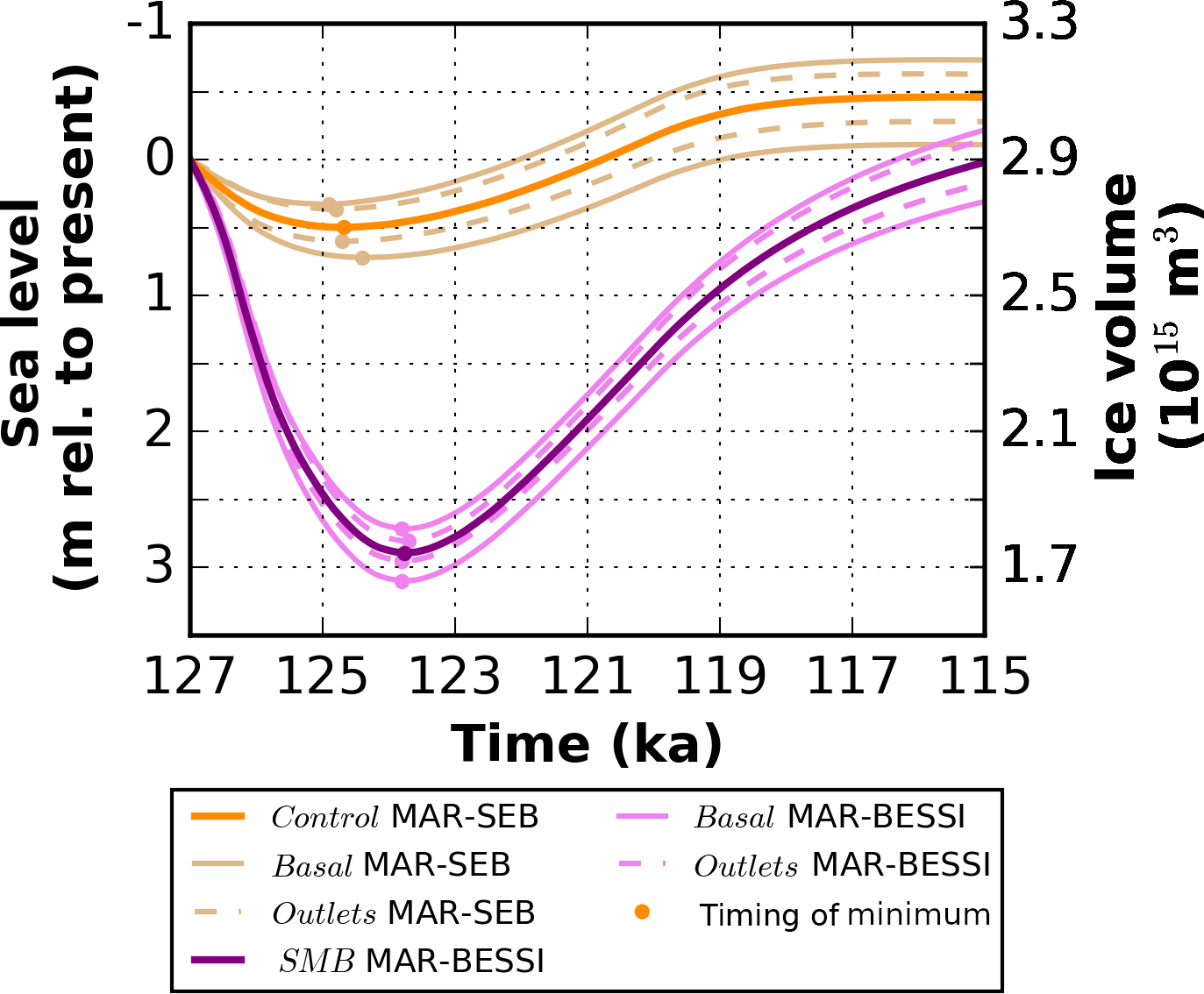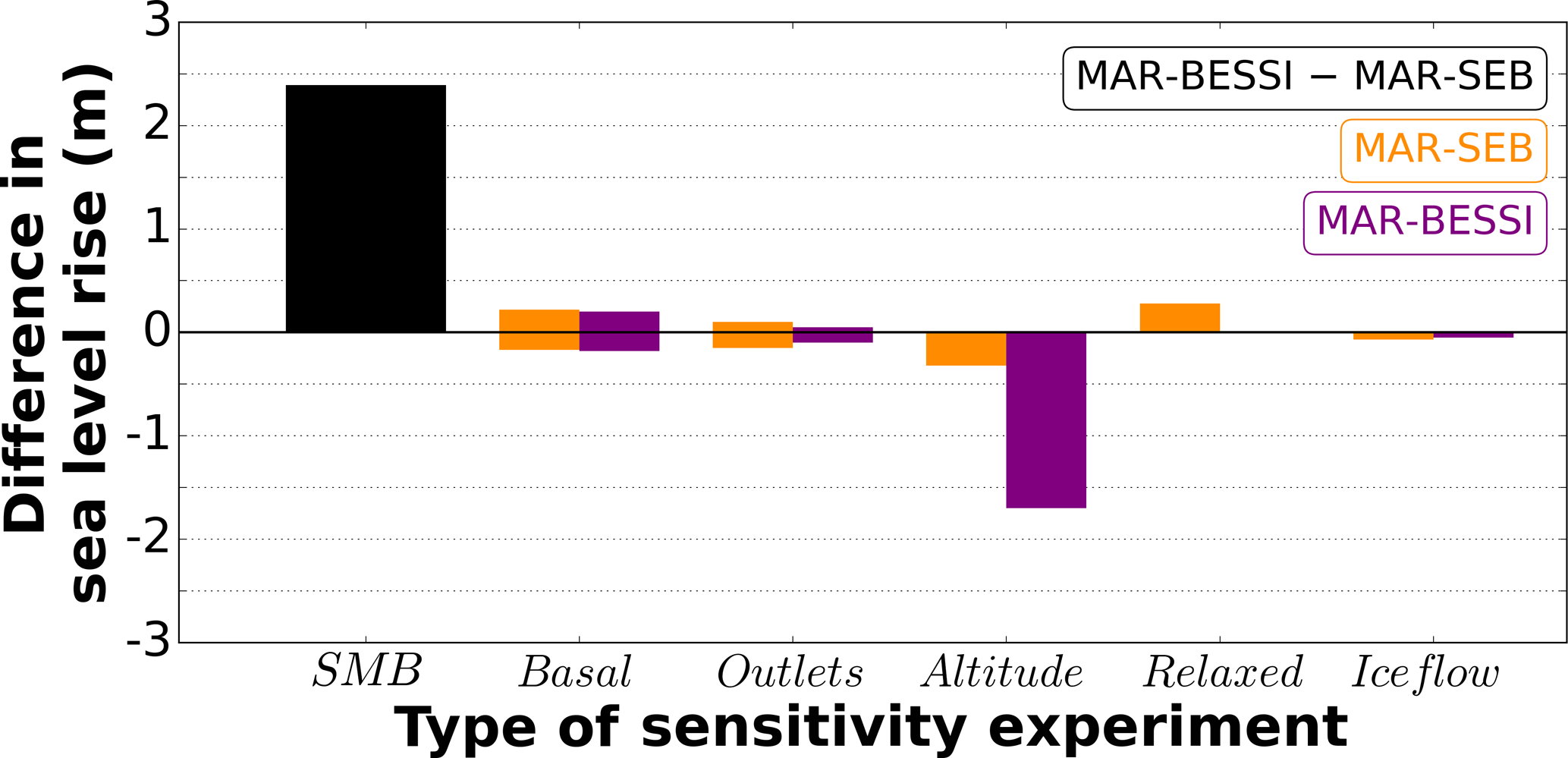Written by Andreas Plach from the Bjerknes Centre and the Department of Earth Science at the University of Bergen.
Modeling the evolution of an ice sheet has many uncertainties. In this study the Eemian, about 130 000 to 115 000 years ago, Greenland ice sheet is used as a test case to perform sensitivity experiments testing changes to various ice sheet modeling parameters.
The sensitivity tests include changes to the surface mass balance (snowfall minus melt), the friction at the base of the ice sheet, the initial state of the ice sheet, the way how the ice flow is represented in the model, and others.
The results suggest that the surface mass balance change has the strongest influence on the millennial scale evolution of the ice volume and that surface mass balance uncertainties should always be included in ice sheet simulations over several millennia.


Reference
Plach, A., Nisancioglu, K. H., Langebroek, P. M., Born, A., and Leclec'h, S.: Eemian Greenland ice sheet simulated with a higher-order model shows strong sensitivity to surface mass balance forcing, The Cryosphere, 13, 2133–2148, https://doi.org/10.5194/tc-13-2133-2019, 2019

